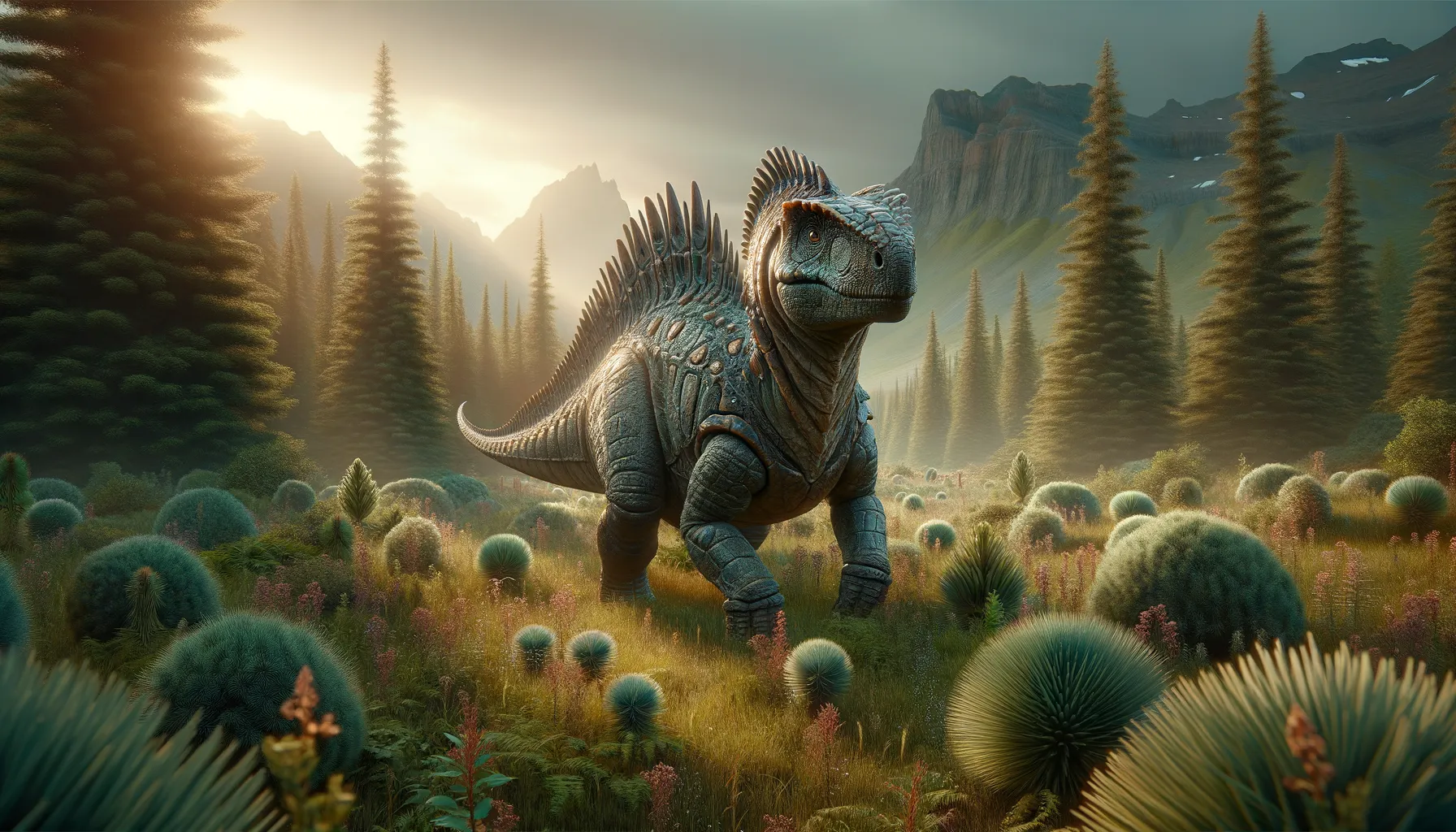
Mymoorapelta
Tough armor for ancient survival.
Period
Jurassic
Length
About 3 to 4 meters long.
Height
Around 2 meters when measured to the top of its back.
Weight
Approximately 1 ton.
Mymoorapelta was a small armored dinosaur from the Jurassic period, known for its distinctive body armor. Its thick, bony plates provided protection against predators while its quadrupedal stance made it stable and resilient. Discovered first in Colorado, this dinosaur reflects the diversity of ancient ecosystems. As a herbivore, it played a crucial role in the environment, shaping the plant life and sustaining the food chain.
Diet
Mymoorapelta was an herbivore, primarily feeding on low-lying plants and ferns. Its strong, beak-like mouth helped it to efficiently strip foliage from branches, contributing to the Jurassic plant ecosystem balance.
Hunting
Being a plant-eater, Mymoorapelta did not hunt for prey. Instead, it foraged continuously to meet its nutritional needs, taking advantage of lush vegetation in its habitat.
Environmental challenges
Mymoorapelta faced the challenge of finding sufficient vegetation in an era of climate fluctuations. Predators were a constant threat, and its armored exterior served as a crucial defense mechanism. It also needed to navigate territorial disputes with other herbivores, searching for optimal grazing grounds amidst changing landscapes.
Speed
Mymoorapelta moved slowly due to its armored body.
Lifespan
Lived for an estimated 20 to 30 years.
First discovery
First discovered in the Mygatt-Moore Quarry in Colorado.
Fun Facts
- Mymoorapelta was a small, armored dinosaur that lived during the Late Jurassic period around 150 million years ago.
- This dinosaur's name means 'shield from Mygatt-Moore', named after the Mygatt-Moore Quarry in Colorado where it was discovered.
- Mymoorapelta belonged to a group of dinosaurs known as ankylosaurs, famous for their heavily armored bodies.
- Despite their tough armor, Mymoorapelta were herbivores, feeding on plants and vegetation with their relatively small size.
- The Mymoorapelta fossil discoveries have mainly been found in the Morrison Formation, a famous geological structure in the western United States.
- Mymoorapelta had a unique pattern of bony plates, or osteoderms, along its back, which provided protection against predators.
- Like many ankylosaurs, Mymoorapelta likely had a slow and steady gait, making use of its sturdy front limbs to navigate its environment.
Growth and Development
Mymoorapelta hatched from eggs and grew relatively slowly, a typical trait among armored dinosaurs. Its development involved strengthening its bony plates and expanding its size to deter predators. Juveniles likely stayed close to adults for protection until their armor fully developed.
Habitat
Mymoorapelta thrived in forested areas with plentiful plant life. Its habitat consisted of diverse environments ranging from woodlands to open plains, offering a variety of dietary options. The dinosaur adapted to living in areas with seasonal changes in plant availability, ensuring survival throughout the year.
Interaction with other species
Mymoorapelta coexisted with various dinosaur species, including predators and fellow herbivores. Its presence helped maintain the ecological balance by contributing to the food chain. While it had little to no direct interaction with predators, its armor was a formidable strategy against them. Plant-dependence led to interactions through competing for resources with other herbivores.
Natural lifespan
Its natural lifespan varied, roughly paralleling modern reptiles.
Reproduction
Reproduction involved laying eggs in secure, hidden nests to avoid detection by predators. Females likely selected nesting sites with abundant foliage for cover. Parental care was minimal, with hatchlings instinctively relying on their built-in defensive features as they grew.
Social behaviour
Mymoorapelta may have lived in small groups or solitary, depending on resource availability. Social structures could have formed during the breeding season and disbanded in scarcity. The species' reliance on armor for defense implies possible limited social interaction due to its solitary protection method.
Fossil locations
Fossils of Mymoorapelta have primarily been found in the United States, specifically in Colorado. The Mygatt-Moore Quarry has been a key site for many discoveries related to this species. These findings help paint a picture of the Jurassic period's ecosystem and Mymoorapelta's role in it.
